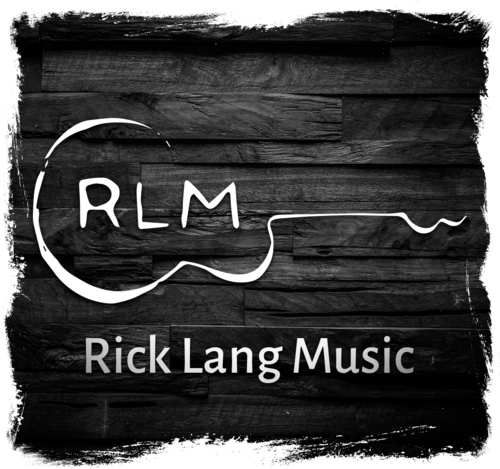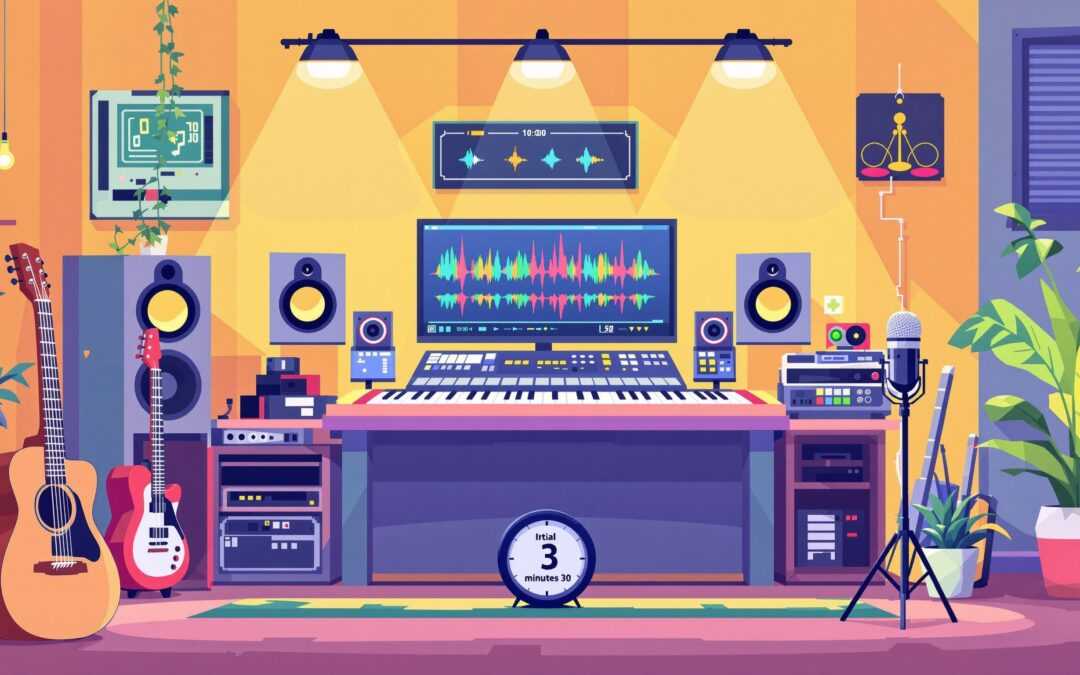Minimalist and complex song arrangements each offer unique strengths. A minimalist approach uses fewer elements, focusing on clarity and simplicity, like in "Seven Nation Army." A complex arrangement layers sounds for a rich, immersive experience, as seen in "Bohemian Rhapsody." Choosing the right style depends on your song’s genre, emotional tone, and production tools.
Quick Comparison
| Feature | Minimalist | Complex |
|---|---|---|
| Core Elements | Few, essential sounds | Multiple, layered components |
| Focus | Lyrics and melody | Emotional depth and texture |
| Best For | Folk, acoustic, pop | Orchestral pop, progressive rock |
| Production Tools | Basic setup | Advanced equipment and software |
| Examples | "Drivers License" by Olivia Rodrigo | "As It Was" by Harry Styles |
Decide based on your genre, emotional goals, and available tools. Balancing both styles can create dynamic, engaging songs.
This Arrangement Rule Will Change Your Music
What Makes a Minimalist Arrangement
Minimalist arrangements focus on a few essential elements and carefully chosen sounds to create a strong impact.
Key Components of Simple Arrangements
These arrangements are built around a few critical elements:
- Core Rhythm: A strong beat pattern that serves as the backbone of the track.
- Lead Melody: A standout melodic line that’s both clear and memorable.
- Supporting Elements: Limited to two or three key instruments or sounds.
- Space: Intentional use of silence to let each element breathe.
This stripped-down approach offers clear benefits:
| Advantage | Effect |
|---|---|
| Highlights Lyrics and Melody | Ensures they shine without interference from other elements. |
| Simplifies Live Performances | Fewer parts make it easier to replicate live. |
| Improves Mix Clarity | Reduces frequency overlap between instruments. |
| Enhances Main Melodic Focus | Keeps listeners locked onto the hook or lead. |
Iconic Songs with Minimalist Arrangements
Some of the most memorable tracks showcase the power of simplicity:
Recent Examples (2020-2025):
- "Drivers License" by Olivia Rodrigo (2021): Dominated by piano and vocals, with subtle production flourishes.
- "Stay" by The Kid LAROI & Justin Bieber (2021): Built around a simple synth loop that emphasizes the vocal hook.
- "Heat Waves" by Glass Animals (2020): Features a sparse arrangement with focused electronic elements.
Timeless Classics:
- "Seven Nation Army" by The White Stripes: Driven by a single riff and minimalistic drumming.
- "Billie Jean" by Michael Jackson: Built on a repetitive bassline and restrained percussion.
- "Sweet Dreams (Are Made of This)" by Eurythmics: Relies on a straightforward synth line paired with a striking vocal melody.
This approach thrives in genres where clarity amplifies the overall impact, such as folk, hip-hop, electronic, and pop. By focusing on fewer elements, each one becomes more meaningful. Minimalist arrangements prove that in music production, less can truly be more.
Next, we’ll dive into how layered arrangements build complexity while retaining a strong foundation.
What Makes a Complex Arrangement
Unlike minimalist styles, complex arrangements bring together multiple instruments, harmonies, and dynamic shifts to create a rich and immersive sound. These arrangements rely on layers that interact in creative ways, offering a deeper listening experience.
Basic Elements of Layered Arrangements
Each layer plays a role in shaping the track’s emotional and sonic depth.
| Layer Type | Purpose | Common Elements |
|---|---|---|
| Rhythmic Foundation | Drives groove and movement | Percussion tracks, layered drums, rhythm guitars |
| Harmonic Structure | Adds depth and emotion | Chord progressions, pad sounds, string sections |
| Melodic Elements | Creates hooks and interest | Lead instruments, counter-melodies, vocal harmonies |
| Textural Components | Fills out sonic space | Ambient sounds, effects, orchestral elements |
| Dynamic Elements | Shapes energy flow | Volume changes, instrument entries/exits, filter sweeps |
The beauty of these arrangements lies in the interaction between layers. For instance, in orchestral pop, swelling strings during emotional moments can blend with brass accents to amplify the drama in ways that neither could achieve alone.
Top Songs Using Complex Arrangements
Modern production techniques have pushed the boundaries of layered arrangements. Here are some standout examples:
Contemporary Complex Arrangements (2020–2025):
- "As It Was" by Harry Styles (2022): Features intricate synth layers, diverse percussion, and carefully arranged backing vocals, creating a textured pop sound.
- "All Too Well (10 Minute Version)" by Taylor Swift (2021): Begins with a sparse arrangement and builds into a rich climax with layered guitars, strings, and drums.
- "Leave The Door Open" by Silk Sonic (2021): Blends classic soul elements like horn sections and layered vocals with modern production techniques.
Classical Complex Arrangements:
- "Bohemian Rhapsody" by Queen: A masterclass in operatic rock, combining multiple guitar harmonies, dramatic shifts, and rich vocal layers.
- "God Only Knows" by The Beach Boys: Showcases intricate vocal harmonies and sophisticated instrumental layering.
These arrangements shine in genres that thrive on emotional storytelling and musical complexity, such as:
- Progressive Rock
- Symphonic Metal
- Orchestral Pop
- Jazz Fusion
- Modern Classical
The challenge with complex arrangements is keeping everything clear and purposeful. Each element must enhance the song’s emotional impact, not overwhelm it. With modern digital audio workstations (DAWs), producers can experiment with layers while maintaining precise control over the mix.
Up next, learn how to pick the right arrangement style for your song.
sbb-itb-1c6af30
Picking the Best Style for Your Song
Deciding between minimalist or intricate arrangements depends on several factors that influence how your song connects with listeners.
What Your Genre and Listeners Expect
Each genre has its own arrangement preferences, which can guide your decisions:
| Genre | Preferred Style | Key Characteristics |
|---|---|---|
| Folk/Acoustic | Minimalist | Raw vocals, acoustic guitar, limited percussion |
| EDM/Dance | Complex | Multiple synth layers, heavy bass, intricate beats |
| Hip-Hop | Mixed | Strong beats, samples, selective layering |
| Rock | Varies | Punk leans minimal; prog rock tends to be intricate |
| Pop | Trend-driven | Currently favors clean production with selective layers |
For example, modern pop often uses strategic simplicity. Billie Eilish’s "bad guy" (2019) relies on just bass, percussion, and vocals, yet its precise arrangement helped it top the Billboard Hot 100.
Aligning Music with Lyrics and Mood
Your arrangement should reflect the song’s emotional essence:
- Intimate Lyrics: Taylor Swift’s "cardigan" pairs sparse instrumentation in verses with layered production during emotional peaks.
- High Energy: The Weeknd’s "Blinding Lights" combines driving percussion and layered synths to match its upbeat vibe.
- Emotional Journey: Some songs, like Coldplay’s "Fix You", build from minimal beginnings to complex climaxes, mirroring emotional growth.
Making the Most of Your Tools
Your production setup plays a big role in shaping your arrangement:
Equipment Considerations:
- Minimalist Setup: Focus on essentials like a quality microphone, audio interface, and DAW software.
- Complex Setup: You’ll need more, including:
- A MIDI controller
- Multiple microphones for instruments
- A computer capable of handling numerous tracks
- Advanced mixing plugins
If your tools are limited, stick to a minimalist approach. Many indie artists, like Bon Iver, started with basic setups, prioritizing strong songwriting and clean execution over elaborate production.
Be honest about your technical skills. Complex arrangements demand advanced mixing techniques to avoid muddiness and maintain clarity. Starting with simpler setups can help you master the basics before diving into more layered productions.
Some of the most memorable songs thrive on simplicity. The White Stripes, for instance, built their iconic sound around minimal instrumentation, turning limitations into creative strengths.
Next, we’ll explore how to combine these approaches for a balanced and dynamic sound.
Mixing Simple and Complex Styles
Combining minimal and intricate elements can create engaging songs that highlight key moments and add clarity to your track. Let’s dive into some techniques and examples that show how to achieve this balance.
Songs That Mix Both Styles Well
Dynamic Contrast in Action
Radiohead‘s "Paranoid Android" (1997) is a prime example of blending simplicity with complexity. It starts with a stripped-down acoustic guitar and vocals, then transitions into a layered middle section featuring guitars, synthesizers, and vocal harmonies. This contrast keeps listeners hooked and adds depth.
Modern Production Examples
Recent hits demonstrate how digital tools make it easier to switch between minimal and detailed arrangements:
| Song & Artist | Minimal Elements | Complex Elements | Impact |
|---|---|---|---|
| "Drivers License" – Olivia Rodrigo (2021) | Solo piano and vocals in verses | Full orchestration and layered harmonies in chorus | Builds emotional intensity |
| "Take Me to Church" – Hozier (2013) | A cappella sections and stripped-down verses | Gospel choir and rich instrumentation in chorus | Highlights spiritual themes |
| "Stay With Me" – Sam Smith (2014) | Simple piano and lead vocal | Gospel choir, strings, and drums in chorus | Elevates emotional moments |
Tips for Arranging a Balanced Sound
Here’s how to create a hybrid style:
- Use sparse verses to focus on lyrics and storytelling.
- Gradually add layers in pre-choruses to build anticipation.
- Contrast sections dynamically, such as quiet verses and fuller choruses.
- Use automation to fade elements in and out smoothly.
Modern DAWs make these transitions easier. Features like track grouping and automation tools help manage layers while keeping the sound clean.
Key Production Techniques
To blend these styles effectively:
- Start with the essentials, like vocals and a main instrument.
- Add complementary layers that enhance rather than clash.
- Use EQ to give each element its own space in the mix.
- Apply compression sparingly to preserve the song’s dynamics.
- Consider bus processing to tie everything together cohesively.
Every element should serve the song’s emotional core. With these techniques, you can shape arrangements that bring your creative vision to life.
Conclusion
When deciding between simple or intricate arrangements, the key is to let your song’s personality guide you. There’s no definitive "right" choice here – what matters is what fits your song’s vibe. Becoming skilled in both styles not only expands your creative toolkit but also enhances your ability to craft compelling arrangements.
Shape your arrangement to match the mood of your lyrics, the expectations of your genre, and the capabilities of your production setup. Write.Record.Release. offers a "30-Day Plan to Launch a Song from Scratch", packed with practical tips for navigating both straightforward and layered production styles.
Many hit songs cleverly mix elements from both approaches. Start with a solid understanding of your song’s emotional arc, then pick arrangement techniques that amplify that feeling. The magic lies in blending simplicity and complexity to tell your song’s story authentically.











